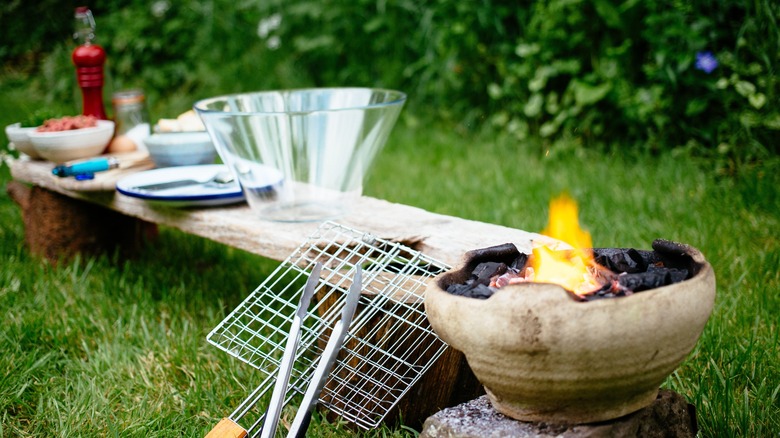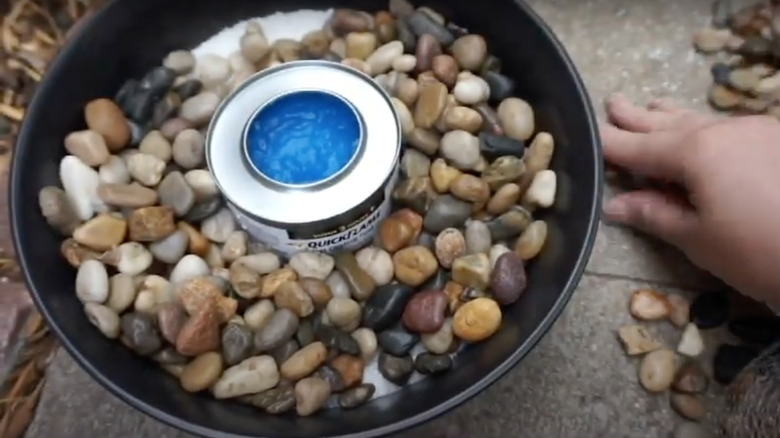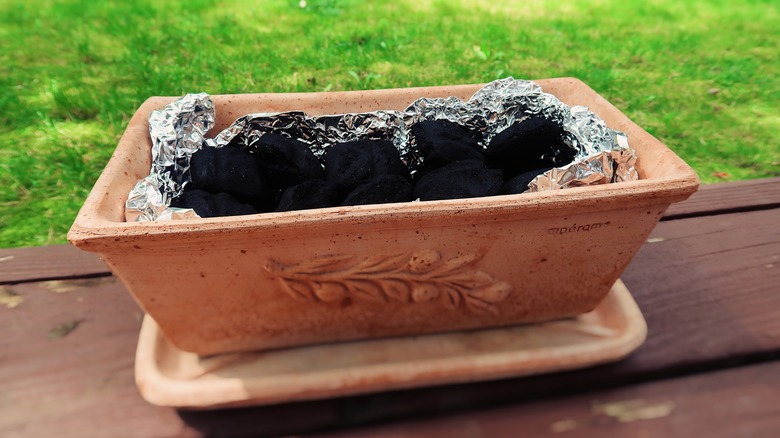Build A Tiny DIY Firepit Using A Terracotta Pot
From the time humans first figured out how to build a fire, they've wanted to sit around it, or in the case of the character played by Tom Hanks in "Castaway," dance around it. Hanging out by a fire hasn't lost its appeal or changed much throughout the millennia, but whatever contains it has. One of the newest developments is building tiny firepits — often for tabletop use — using a terracotta pot or planter. If it sounds a little unnerving to use a pot that normally holds soil and a plant for charcoal and flames, that flicker of fear is a healthy thing. Fire should never be taken lightly. Anyone wishing to create any type of firepit should check with their local municipality to determine the prevailing laws and municipal codes that may apply. A good resource for many regions across America is the code library on Municode, but if your municipality isn't listed, contact them to find out information about fire regulations in your area.
Designs and fuel will vary somewhat, but in all cases, you'll want your firepit, chimineas, or any other fire sources to follow additional safety procedures. Don't leave the fire unsupervised for extended periods; keep the firepit on a solid, flat surface, and make sure the placement is fire-safe, whether it's a tabletop, patio, or deck. Now that you've checked local regulations and put fire safety front and center, you're ready to build a tiny firepit using a terracotta pot.
Turning up the heat on terracotta
Once you have determined that a tiny firepit made from a planter is permitted in your municipality, you'll want to select the size and style (opt for a brand-new one). Whatever container you choose, the general idea is to create a firepit that's enjoyable (and safe, of course) but also easy to build without digging holes or mixing cement. The first step is to "season" the terracotta by getting it super-hot and then letting it cool down. Before heating it, be absolutely certain that the pot is completely dry. Terracotta is known to be very absorbent, and water that's still in the clay could expand when heated, shattering the container.
Most designs for terracotta firepits call for using sand or pea gravel, heavy-duty aluminum foil, and charcoal, though some will toss the charcoal and use a can of gel fuel (like Sterno) instead. The fuel choice is a personal preference. Charcoal is an inexpensive option, but gel fuel extinguishes quickly. One option for bigger planters is to measure a piece of chicken wire (or hardware cloth) to fit inside the bowl several inches down. Remove the wire in order to add the flame source, like gel fuel, then put the chicken wire back and feed a wick through it. On top of the chicken wire, add river rock or decorative flame-safe rock to the top of the terracotta pot.
Building a tiny fire pit for s'mores and more
While most DIY firepit ideas are envisioned as ones that a few people can gather around (and still be considered "small" by most people's standards), some can be truly tiny. Using a terracotta flower pot that can sit on a tabletop, you can create a small fire container that is just the right size for making s'mores, which can add a special touch to a child's birthday party, an impromptu summer gathering with neighbors, or even a whimsical touch at a wedding reception.
Because the tiny firepits are so small, ensure you're lining the terracotta flower pots with heavy-duty foil to provide an added layer of protection. Add a layer of sand over the foil, then top it with about two layers of charcoal briquettes, allowing enough space between them for air to flow. Some people might want to give it a drizzle of lighter fluid. If so, use a tiny amount, and be sure you don't have the type of charcoal with lighter fluid built into it before adding fluid to the briquettes. When the s'mores are gone, linger by your tiny DIY firepit until it cools off, or speed it up by placing a terracotta saucer over the mini opening. The saucer will smother the fire, preventing oxygen from getting to it. Don't use water to put out the fire because the shock of cold water could shatter the pot.


